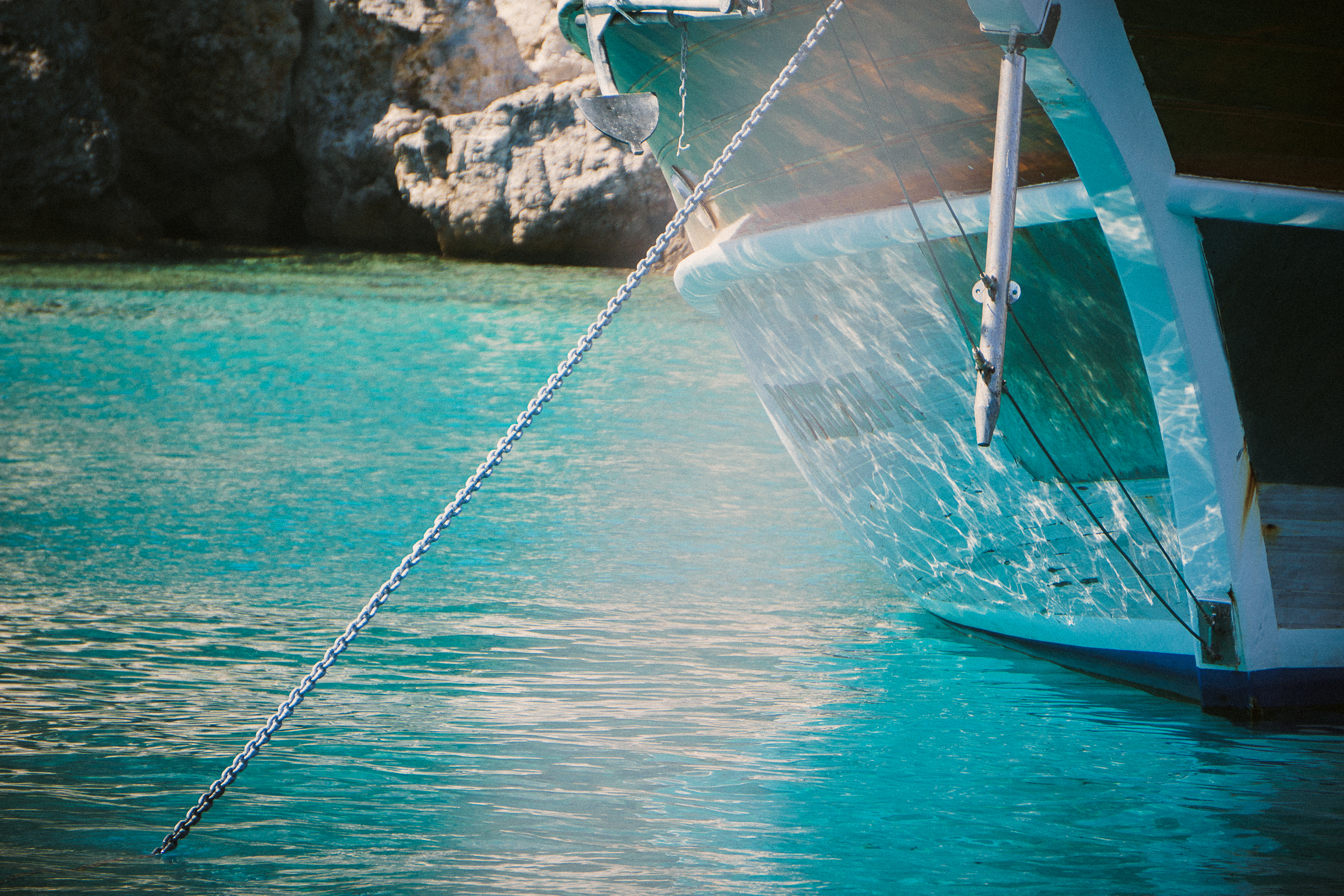Whether you are moored in the marina, or out and about in your boat, nothing can ruin a good day on the water like having to chase a wayward dinghy. When exploring steep sandy areas, and with minimal tidal action it is all fun and games. But allow rocky shorelines or a cliff face, or a salt marsh where there are oysters or other equally lethal projections to damage your dinghy’s bottom, to the equation and it is a problem. There is a very good technique for anchoring dinghies that keeps them close enough to haul in when needed, but also keeps them safe from damage. This technique could potentially earn you the name of ‘freakin’ genius’, it is so clever (and doesn’t really take a lot of equipment or much skill). Anchoring a dinghy, once learned, is a no-brainer and every boat owner that has one should have a plan.
Equipment Needed:
- Your dinghy
- An anchor (bag anchors are best)
- Bow-line (at least 50 feet)
Best Dinghy Anchoring Technique: Breaking it Down
This anchoring technique is going to seem counter-intuitive, but once it is in place you’ll wonder why it didn’t occur to you to use this on any of your smaller boats. First, when you arrive at the shoreline, step out and take the anchor and bowline with you. Then, run the bowline through the anchor bag, but don’t tie or fasten it. You want the anchor to slide freely along the bow-line. Then, hold onto the end of the line, push the boat out, then toss the anchor as far from shore as you can. Then tie the line to shore, making sure to leave some play in the line to allow for tides, but not enough slack to cause the boat to swing in too close to the shore when the tide goes out.
The Beauty of a Bag Anchor
Bag anchors, if you’ve never used one, is a bag full of very heavy objects. Most people construct their own, but a mesh nylon bag is supremely suited to the task. The size used for oyster bags are great, but even the wet bags that divers use will work. When you need a ready anchor, just fill it up with rocks or heavy objects from the shoreline (or some enterprising people carry the bag full of sand).
Anchors Away!
It should be said that once you’ve returned from your shore excursion, you’ll need to untie the line, pull the anchor bag and the dinghy to you, and then load up, knowing that your dinghy not only stayed put, but it has done so without getting damaged. So many boat owners don’t realize that a dinghy, though it draws little, still sits low enough once inshore to sustain some damage. A dinghy is not a cheap investment, so learning how to successfully anchor them, whether on shore, or in the marina, is of paramount importance toward the longevity of this useful piece of boating equipment.
Anchoring at the Beach
Anchoring at the beach, where you need to anchor farther out to account for the tides can be accomplished using a ‘trip line’ anchoring technique. The best type of boating anchor for this is a grappling hook anchor that is made specifically for dinghies. You’ll need to get about five feet of a marine grade chain, with about eight feet of a 3/8 inch line. Place a clip on the end of this so that it can be fixed to the boweye at the waterline on the dinghy. Next, get about 100 feet of a ¼ inch nylon line (on a spool). This is what will be attached to the trip line eye on the anchor’s bottom.
What makes this anchoring technique so beautiful is the easy deployment. Stash all of the anchoring equipment on the bow, and then drop it into the water by giving it a little tug on the trip line. Thus, the trip line becomes both a retrieval/deployment device, as well as a quick emergency retrieval in case the anchor fails. Of course, keeping the business end of the anchor stowed so that it doesn’t damage the dinghy is also very important. So careful placement, and having a routine way of stashing it is also something to keep in mind.
Anchoring your dinghy, whether in the marina, the beach, or along a rocky shore, doesn’t need to be a harrying experience. Those who’ve been boating for a while, have similar rigs and can quickly and easily deploy their anchor, retrieve it when necessary, and keep their boating equipment (and investment) safe. Just a little time, and not a lot of money, can help you to control a wayward boating dinghy and make your day out on the water a good one.

